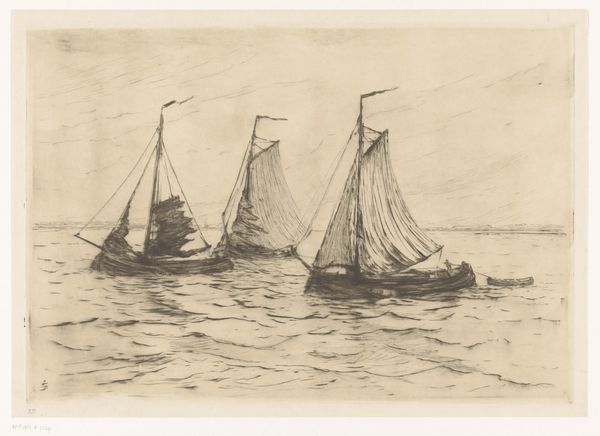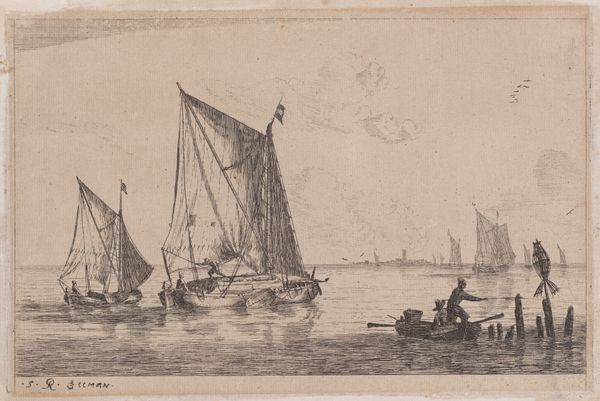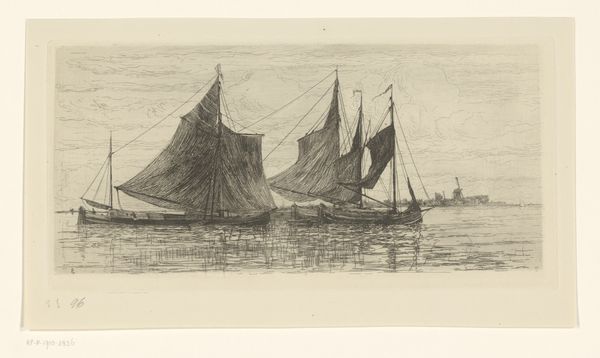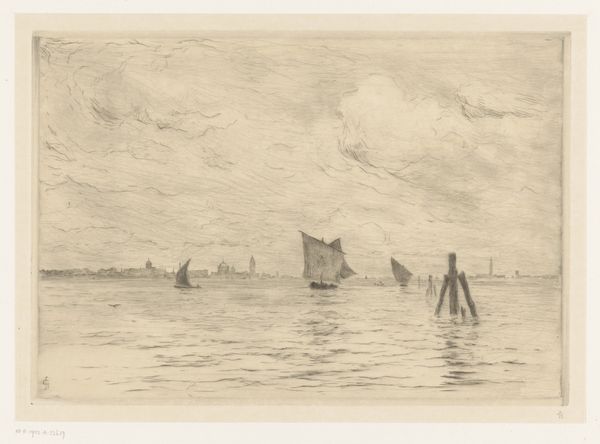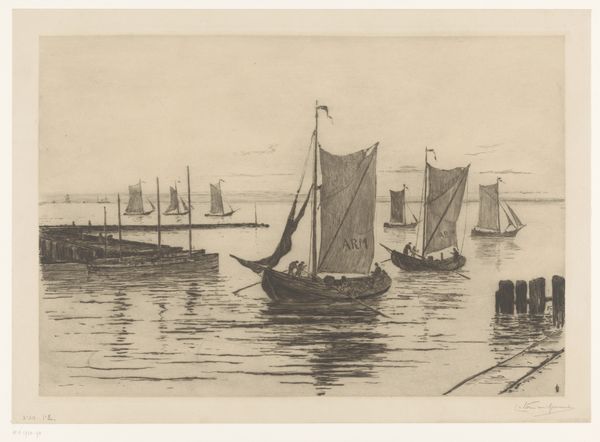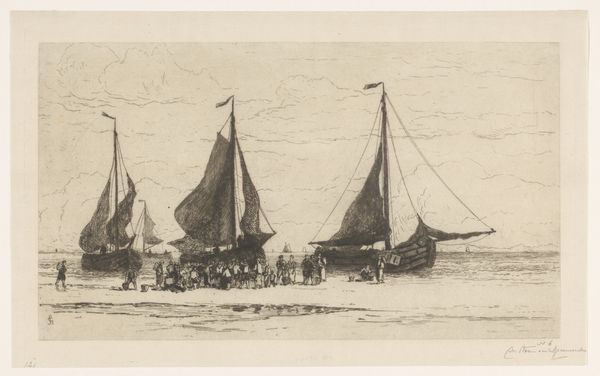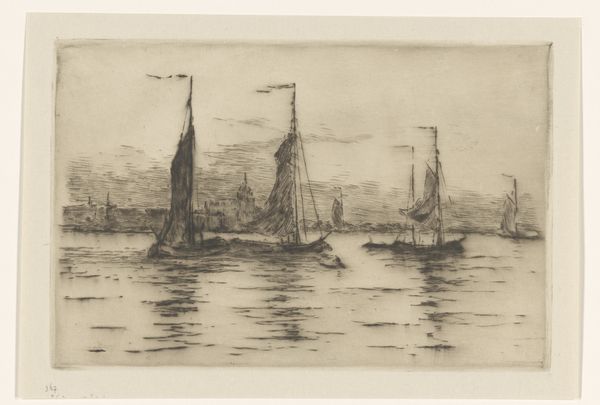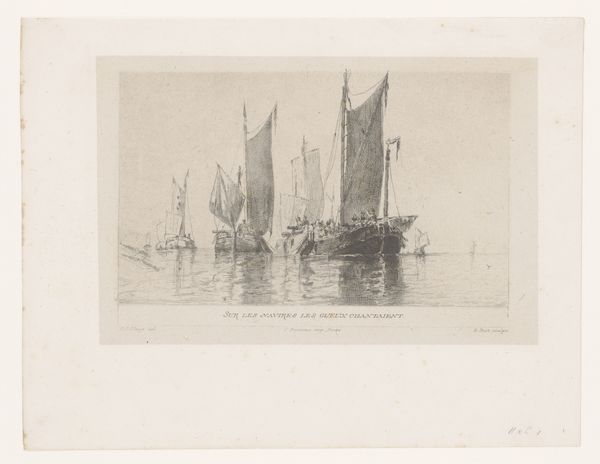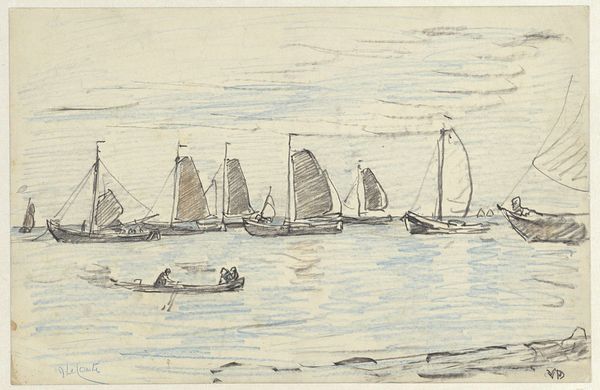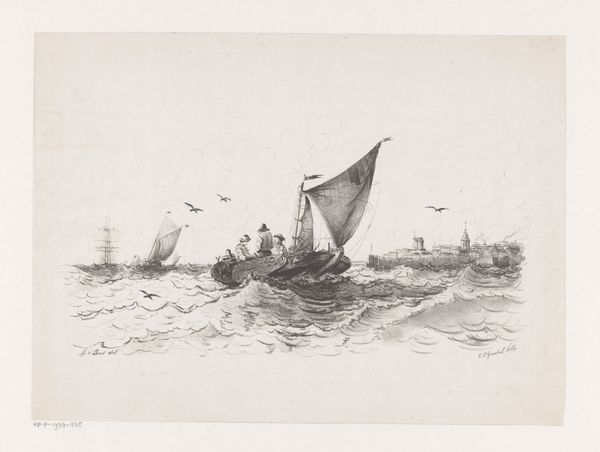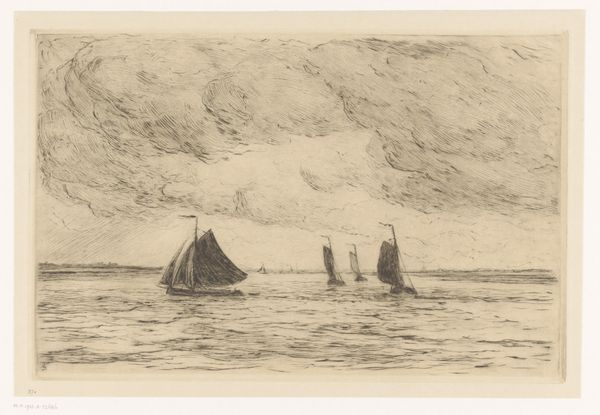
drawing, print, etching
#
pencil drawn
#
drawing
# print
#
etching
#
landscape
#
river
#
etching
#
pencil drawing
#
19th century
#
realism
Dimensions: height 348 mm, width 513 mm
Copyright: Rijks Museum: Open Domain
Curator: Looking at this etching titled "Vissersvloot op de Maas," or "Fishing Fleet on the Meuse," made by Carel Nicolaas Storm van 's-Gravesande, likely sometime between 1851 and 1902 and now held here at the Rijksmuseum, what is your initial read of it? Editor: There's a remarkable stillness, almost a somber mood, evoked by the soft gradations of gray. Despite depicting numerous fishing boats, there’s little sense of bustling activity. They're ghosting along the river, sailing into the past. Curator: Indeed, it is a scene imbued with tranquility. But what is so powerful, for me, is how Van 's-Gravesande manages to depict a sense of timelessness in the scene. Editor: Absolutely. Fishing fleets have sailed rivers for centuries, but the specifics—the type of boat, the hint of industry on the distant shore, maybe even the cut of the sails – subtly situate this within a particular socio-economic framework. Were there major changes in fishing practices at this time on the Meuse? Curator: The rise of industrial fishing certainly began impacting smaller, traditional fleets, leading to shifts in maritime communities. The artist himself lived through a period of immense transformation. I wonder, were the fishing boats used as symbolic reference to the cultural memory of Dutch maritime power? Editor: It’s possible. Remember that marine painting was already loaded with nationalistic fervor. Choosing such a subject, particularly one that seems on the cusp of disappearing, lends itself to a certain politicization of imagery. And these etching techniques evoke an interesting dynamic; this imagery creates reproducible forms that become very impactful when discussing history. Curator: Certainly, this work creates a layered cultural understanding; how technological and political histories interweave, becoming ingrained and emotionally significant. Editor: Ultimately, this image makes me consider the legacy of the working class. These industries and labors become markers of a unique heritage; a shared, maritime, history of the Netherlands. Curator: Thank you for the valuable points. I am also left pondering the continuity of symbols and culture. The water element for one becomes a link; connecting humanity across centuries, mirroring transformations while retaining foundational symbolism. Editor: Yes, a shared understanding that art can act as a carrier for political sentiment. I hadn’t quite understood that until this moment.
Comments
No comments
Be the first to comment and join the conversation on the ultimate creative platform.

